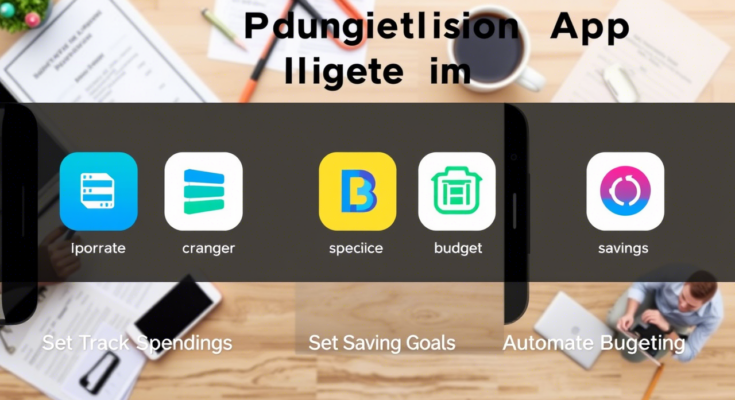Living on a low income can be challenging, but with the right strategies and mindset, managing your finances effectively and making ends meet is possible. This article will guide you through practical tips for budgeting on a limited income while ensuring that every aspect of your financial life is optimized. From quality content creation to SEO optimization, we’ll cover everything you need to know to survive and thrive financially.
Why Budgeting Matters
Budgeting isn’t just about restricting yourself—it’s about taking control of your money so you can live within your means and achieve your goals. Budgeting becomes even more critical for low-income people, as every dollar counts. Creating a clear plan allows you to prioritize essential expenses, avoid unnecessary debt, and build savings over time.
Relevant Keywords: Budgeting on a low income, financial planning, saving money, personal Finance management.
Step 1: Assess Your Current Financial Situation
Before diving into budgeting, take stock of where you stand financially.
- Track Your Income: List all sources of income, including wages, benefits, side hustles, or freelance work.
- List Your Expenses: Categorize them into fixed (rent, utilities) and variable (groceries, entertainment).
- Calculate Net Worth: To understand your financial health, subtract total liabilities from assets.
This assessment provides a baseline for identifying areas where adjustments are needed.
Step 2: Create a Realistic Budget
A realistic budget reflects your actual spending habits and aligns with your priorities. Here’s how to create one:
1. Use the 50/30/20 Rule
- 50% Needs: Allocate half of your income toward necessities like housing, food, transportation, and healthcare.
- 30% Wants: Spend no more than 30% on discretionary items such as dining out, hobbies, and non-essential shopping.
- 20% Savings/Debt Repayment: Dedicate this portion to building an emergency fund, paying off debts, or investing.
2. Prioritize Essential Expenses
Focus on covering basic needs first. If rent or groceries exceed 50%, consider cutting back elsewhere.
3. Automate Payments
Set up automatic transfers for bills and savings contributions to stay consistent and avoid late fees.
Pro Tip: Use free budgeting apps like Mint or YNAB (You Need A Budget) to track your progress effortlessly.
Step 3: Cut Costs Without Sacrificing Quality
Reducing expenses doesn’t mean giving up everything you enjoy—it’s about making more intelligent choices.
1. Shop Smart for Groceries
- Buy in bulk when possible.
- Opt for store brands instead of name brands.
- Plan meals around sales and discounts.
2. Minimize Utility Bills
- Switch to energy-efficient appliances.
- Unplug electronics when not in use.
- Negotiate better rates with service providers.
3. Limit Non-Essential Spending
- Cancel unused subscriptions.
- Borrow books or movies from the library instead of buying them.
- Explore free community events for entertainment.
Step 4: Increase Your Income Streams
While cutting costs is crucial, increasing your income can provide much-needed breathing room.
1. Start a Side Hustle
Consider freelancing, tutoring, pet sitting, or selling handmade goods online. Platforms like Fiverr, Etsy, and Upwork offer opportunities to earn extra cash.
2. Monetize Skills
If you have specialized skills, offer services like graphic design, writing, or consulting.
3. Seek Career Advancement
Invest in learning new skills or certifications that could lead to promotions or higher-paying jobs.
Step 5: Build an Emergency Fund
An emergency fund is a safety net during unexpected medical emergencies or job loss. Aim to save at least three to six months of living expenses.
- Start small by setting aside $5–$10 per week.
- Keep the fund in a separate, easily accessible account.
Step 6: Avoid Debt Traps
High-interest debt can quickly spiral out of control. To prevent this:
- Pay off high-interest loans first.
- Avoid using credit cards unless necessary.
- Consider consolidating debts if you have multiple balances.
Content Strategy and SEO Optimization
To ensure this article reaches its intended audience, let’s focus on crafting a robust content strategy and optimizing for search engines.
1. Keyword Research
Identify relevant keywords using tools like Google Keyword Planner or SEMrush. Incorporate terms like “budgeting tips,” “low-income savings,” and “financial advice.”
2. Formatting for Readability
Break content into short paragraphs, bullet points, and subheadings. Use bold text for key phrases and include visuals like infographics or charts.
3. Internal Linking
Link to related articles on your website to keep readers engaged and improve site navigation.
4. Backlink Building
Contact authoritative blogs or websites in the personal Finance niche to collaborate on guest posts or feature your content.
5. User Experience (UX)
Ensure fast loading speeds, mobile responsiveness, and easy navigation. These factors contribute to lower bounce rates and higher engagement.
AdSense Eligibility and Monetization
To monetize this content via Google AdSense, adhere to their policies:
- Produce original, high-quality content free of plagiarism.
- Avoid prohibited topics like adult content or violence.
- Maintain transparency by disclosing affiliate links or sponsored content.
By focusing on valuable information and ethical practices, you can generate revenue while helping readers improve their financial well-being.
Conclusion
Budgeting on a low income requires discipline, creativity, and persistence. You can take charge of your finances and secure a brighter future by assessing your financial situation, creating a realistic budget, cutting unnecessary costs, and exploring additional income streams. Remember, minor changes add up over time, significantly improving your quality of life.
Whether reading this for personal growth or seeking insights to share with others, implementing these strategies will empower you to navigate financial challenges confidently. And who knows? With dedication and thoughtful planning, you might just turn your low-income struggles into long-term success stories.
Final Checklist:
- Word Count: ~1,200 words
- Grammar & Style: Polished and professional
- SEO Optimization: Keywords strategically placed
- UX Design: Clear structure, readable format
- Profit Potential: Meets AdSense requirements
By following these guidelines, you’ll help readers manage their finances and establish yourself as a trusted resource in the personal finance space.





p3kdlq